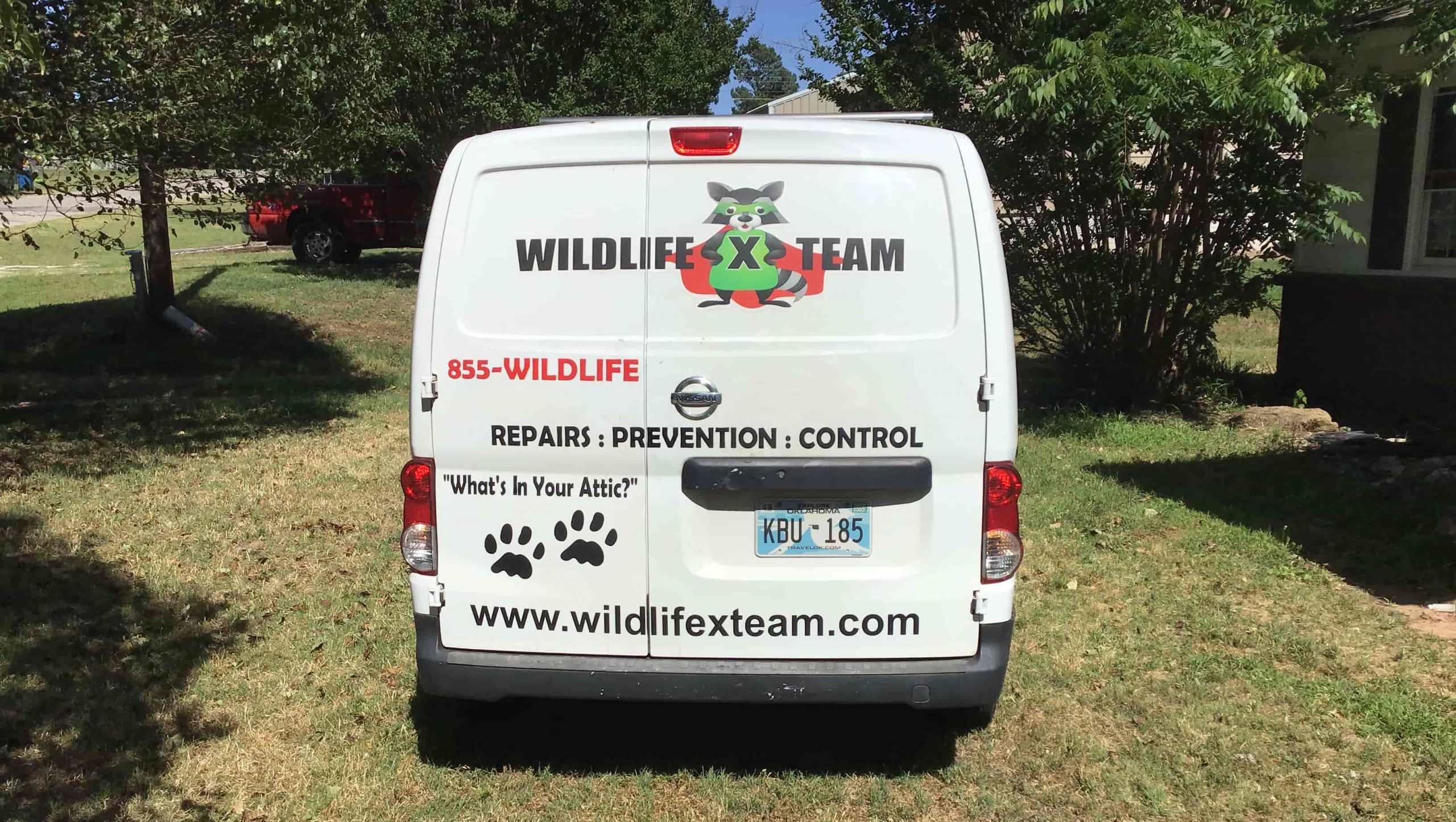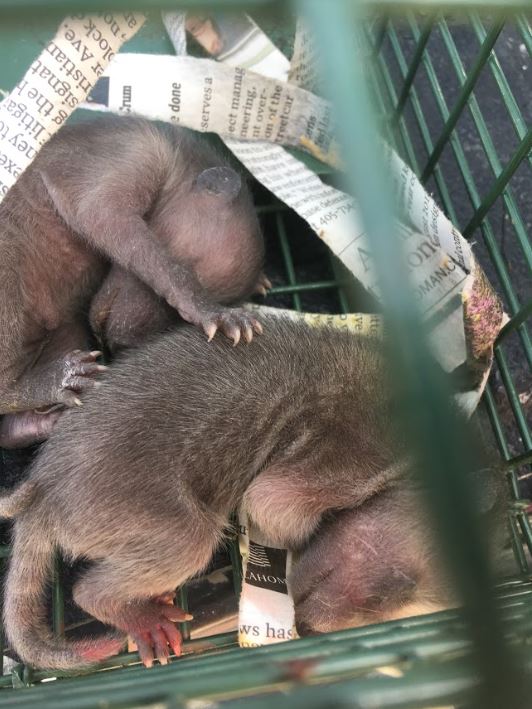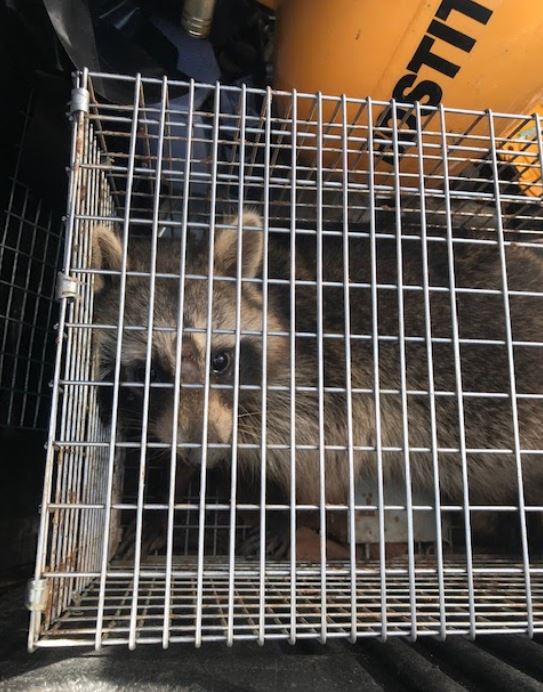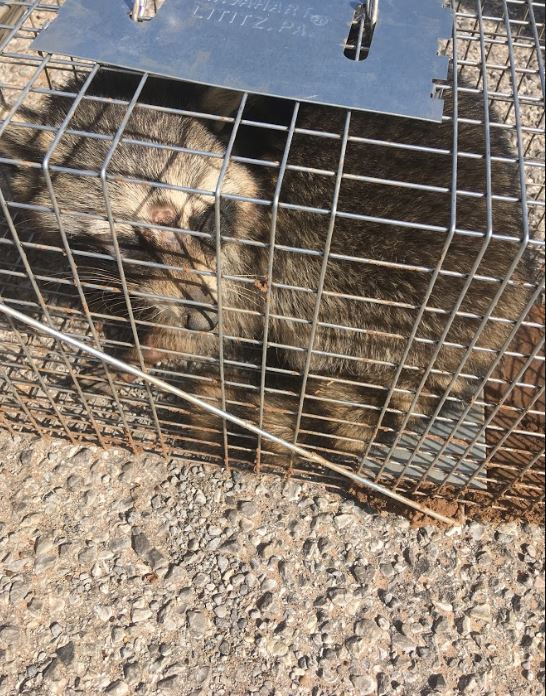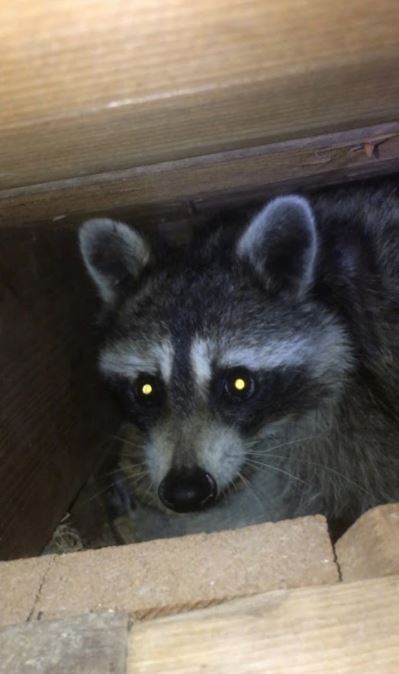
Call for Your Exclusive Wildlife Inspection Report.®
Raccoon Removal
Raccoons are easily recognizable by the ‘black mask’ across their eyes, and also their bushy tails that alternate between gray and black stripes. Because of their cat-like appearance, people mistakenly assume that they’re cute creatures. They might be cute but they are one of the most notorious wildlife animals in the United States. They use their strength, agility, dexterity, and adaptability to constantly cause troubles for homeowners. Some of which include:
- Residing in the attic or chimney.
- Stealing garbage, pet food, birdseed, etc.
- Eating the fruits and vegetables in the garden.
- Littering the yard, swimming pool, or porch with their feces.
- Attacking smaller pets.
- Risk of diseases like rabies and roundworms.
At Wildlife X Team Tulsa, we can help you deal with the raccoon infestation problem you’re facing.
What Attracts Raccoons
Raccoons are primarily attracted by the presence of good food and shelter.
- Food
Raccoons are omnivores and opportunistic eaters, with their diet heavily determined by their environment. Some of the common food they eat in the wild includes plants, nuts, berries, insects, frogs, rodents, fish, and more. But in urban environments, they have developed a penchant for human food. That’s why they’ll gain access to garbage for a variety of treats.
- Shelter
Animals love comfort, just like we do, and the raccoon is no exception. Since raccoons are adept climbers, they love residing in elevated places. This makes chimneys and attics they’re preferred residing spots.
Signs of a Raccoon Infestation
If you suspect you have a raccoon infestation, there are some signs you should look out for. Their footprints look like that of humans but they’re only 4 inches long. Also, check out for scratch marks and droppings at the bases of trees – this is a sign of high raccoon activity.
If you notice that your garbage cans are always toppled, then raccoons might be the culprits. You might also hear low growls and shuffling noises as raccoons run along the roof.
Raccoon Removal Process
There’s no one strategy for dealing with all raccoon infestation problems. An effective strategy has to be crafted based on your specific needs – for instance, if the raccoon is residing in your attic versus if it is disrupting your garden. We take note of that at Wildlife X Team Tulsa and that’s why we carry out a thorough investigation and ask questions to determine the optimal course of action. But generally speaking, here’s how we go about the raccoon removal process.
Get Quote for Your Exclusive Wildlife Inspection Report.®


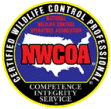
Eliminating Attractants
The first thing you want to do is eliminate any incentives that raccoons are getting from residing on your property. This involves eliminating all food and water sources. Here are some of the things you can do.
- Tightly secure your trash cans.
- Do not leave your pet food outside.
- Clean up fallen berries, nuts, fruits, birdseed, and more from your yard.
- Under no circumstance should you feed a raccoon? It will just keep returning.
- Install a chimney cap to prevent them from accessing your chimney.
- Repair all vulnerable spots on your roof that can serve as potential entry spots to your attic.
Full Inspection
If you suspect a raccoon infestation, you have to figure out the extent of the problem. That’s why it’s important to answer questions like: How do they get in? Are there kits also living in my attic? What is the extent of the damage caused? Are they eating my crops or stealing fish from the pond or raiding my trash cans? Are they residing in crawlspaces? And lots more. Knowing the extent of the damage caused will equip you to attack the problem more effectively.
Raccoon Control
After determining the extent of their operation, the next step is to get rid of them. Raccoon removal requires a license, therefore, you shouldn’t do it by yourself. Getting a wildlife professional like those at Wildlife X Team Tulsa will help you properly remove and relocate these nuisance critters. Here’s how we go about raccoon removal.
Live Traps
Live trapping is the most effective way of getting rid of raccoons, especially if it is residing in your attic. Before a raccoon is trapped, you have to ensure that no kits are residing in the space. If there are kits, they must first be picked up and placed in a sack. Thereafter, they are used to lure their mother into a cage. Then, the mother and her kits are relocated to, at least, 10 miles from the capture site.
Exclusion Devices
If you have a lone raccoon living in your attic, then all entry holes except one should be sealed up. Thereafter, an exclusion device should be installed in the last hole. Once the raccoon leaves through the exclusion device, it won’t be able to get back in. Thereafter, the last hole should be sealed
Repellents
There are several raccoon repellents on the market including ammonia, mothballs, and pepper. However, they are not effective. Provided there’s still access to shelter or food, raccoons will deal with minor inconveniences caused by the repellents.
Fencing
Fencing is quite an expensive but effective method for preventing raccoons from gaining access to your yard. To prevent them from burrowing, the fence should be several inches deep. Since they are adept climbers, the fence should be slanted outwards to make it difficult to scale. Alternatively, an electric wire can be installed on the fence.
Decontamination
After getting rid of the raccoon, the infected space has to be decontaminated. This involves removing all remnants brought in by the raccoon. It also involves clearing away their droppings. Failure to clear away these materials will attract insects like cockroaches that can further the spread of diseases. Thereafter, an enzyme-based disinfectant has to be used to kill all germs and bacteria.
The final stage is repairing the damages that have been caused by the raccoon. This includes replacing irreparable insulation material, fixing damaged pipes, ducts, and wires. Repairing damaged wood will help to protect the structural integrity of the building.
How to Prevent Raccoons from Entering Your Home
Raccoons have become one of the most common nuisance animals in the United States, as they have become very well adapted to living in urban areas, as well as rural areas. These critters can cause a wide variety of problems whether they are in your home or on your property. If you are worried about them coming onto your property, luckily there are ways to prevent them from entering your home. Continue reading to learn more about preventing raccoons from getting into your house.
What Damages Do Raccoons Cause?
Surprisingly enough, raccoons can cause problems in homes in two vastly different ways. The first, most serious way, is through the diseases they spread. Raccoons are well known for carrying rabies, raccoon roundworm, and many other viral and bacterial illnesses. Virtually every disease raccoons carry can be deadly serious to humans, with some like raccoon roundworm being highly lethal. These diseases can be spread through bites and scratches, or simply by coming into contact with the raccoon’s urine, saliva, or droppings. Raccoons can cause serious health problems that can put you or your family in the hospital, so it is very important to remove them very soon.
In addition to the health issues caused by raccoons, the damage is a very large problem as well. Raccoons are very destructive creatures, well known for their tendency to create large messes at all times. When raccoons get into homes, they love to get into the attic. Once in the attic, they will chew up all kinds of building materials. Insulation is torn up, and oftentimes, the raccoon will have their young inside. These critters can even create new entry holes for future animals to get in as well. It is very important to keep these critters out of your house!
Property Prevention
The first line of defense when it comes to preventing raccoons from getting into your home is your yard. In order to keep raccoons off of your property, there are some quick and easy ways that you can make your yard less attractive to these animals. The easiest way to reduce curb appeal is to secure all garbage and pet food so that raccoons do not have an easy food source. Once this is done, be sure to clean up your yard. Be sure that all woodpiles, tall grass and weeds, and any other debris are cleaned up.
Home Prevention
The best way to ensure you are preventing raccoons from entering your home is to take a set of steps to fortify your home. The first thing on your to-do list is to thoroughly inspect the exterior and the interior of your home. Look for any gaps, cracks, or holes, or any other problem areas you may see. Be sure to check all along the attic and roofline of your home, as these are common entry points. If you have found any problem areas, you should seal these up with all-weather sealant, aluminum sheeting, or any other building material you may want. This simple method alone should be enough to prevent raccoons from entering your home at all.
Why Wildlife X Team Tulsa
Raccoons are very destructive and difficult to deal with. Coupled with the fact that they carry many zoonotic diseases, homeowners should not interact with them. By involving Wildlife X Team Tulsa, we make use of the best strategies to help you effectively deal with your raccoon problem. We have all the required licenses to trap and relocate these nasty pests. Let us help you eradicate your raccoon problem today.
